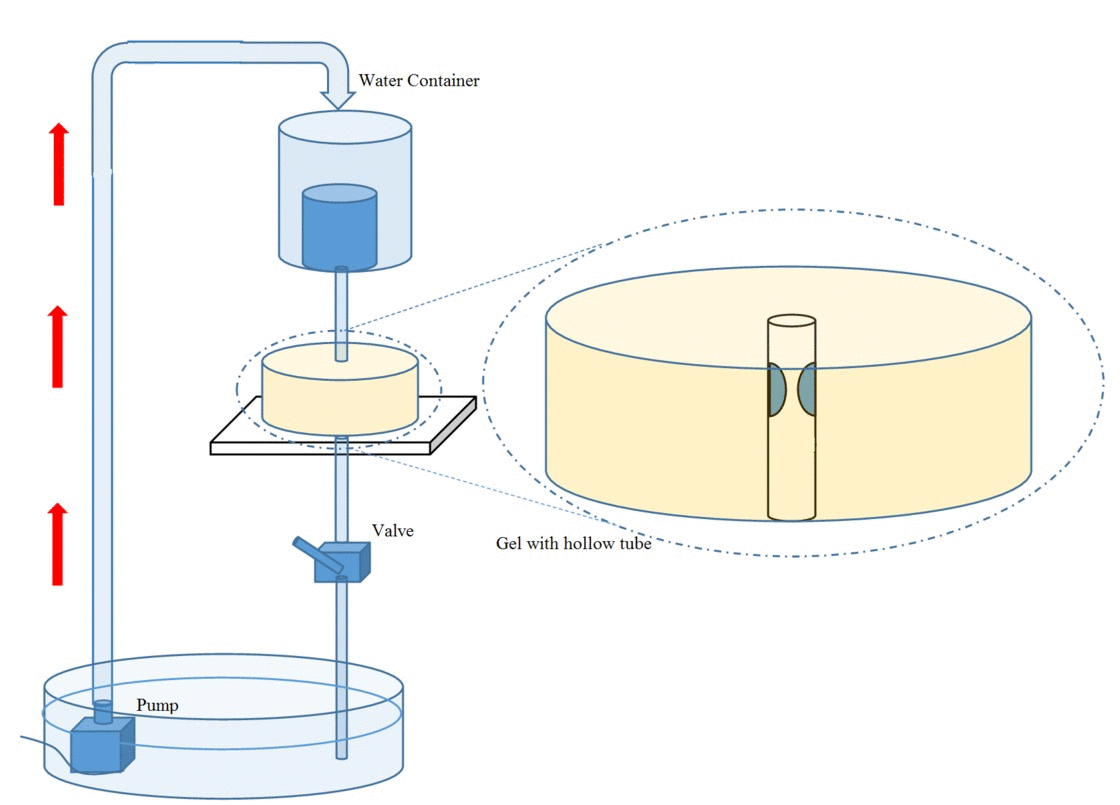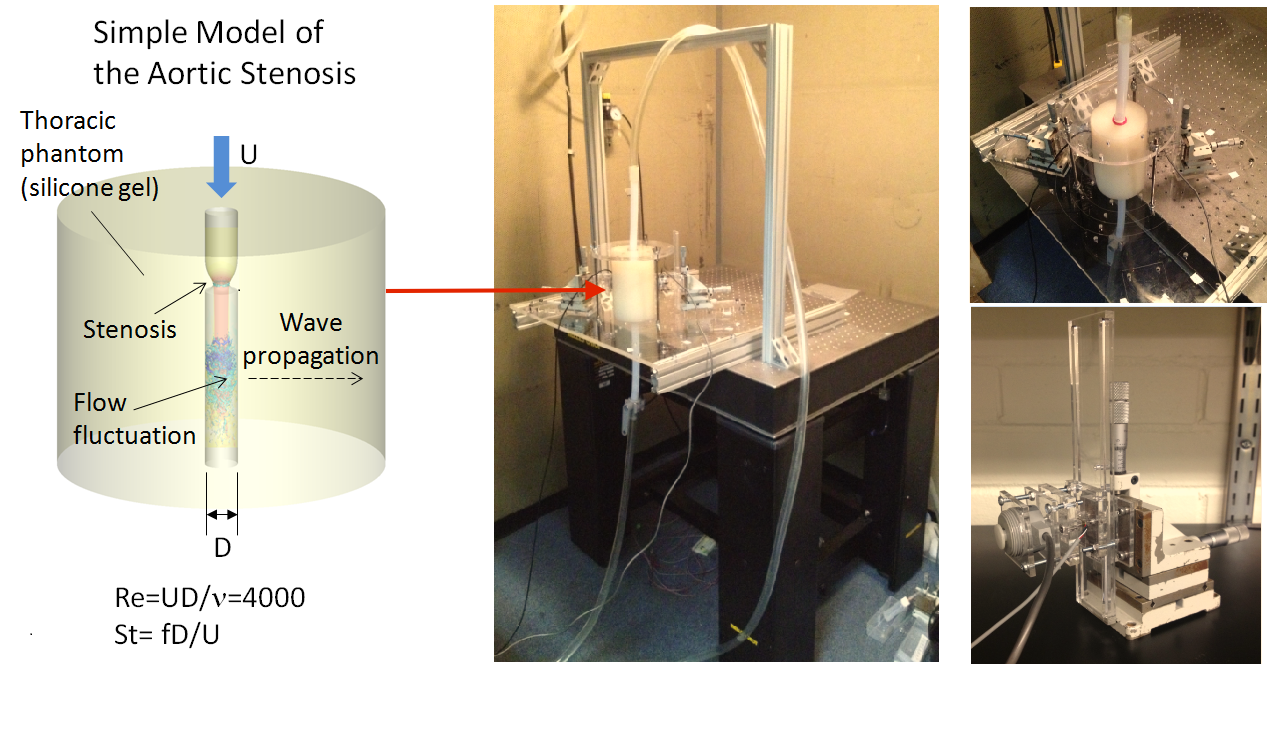Phantom Testing and Validation
Phantom Testing and Validation
In order to validate the computational hemoacoustic model and to investigate and develop sound source identification algorithms in-vitro, we will employ a canonical phantom of the thorax. The thoracic phantom will include three “organs”: lungs and bones and tissue, each with distinct acoustic properties
For recreating flow-induced sounds inside the thorax, a hollow space with the shape of a tube with an eccentric obstruction is created inside the tissue mimicking material; flow through this orifice will generate vortex shedding, and an associated sound that mimics many cardiac murmurs (such as in valvular regurgitation, valvular stenoses, obstructive HCM, ventral-septal defects etc). The flow rate (and through that, the intensity and spectrum of the sound) will be varied by adjusting the valve and the actual flow rate, pressure, and the wall oscillation will be measured to characterize the source mechanism. Furthermore, the eccentric obstruction will be designed to allow rotation thereby providing an ability to vary the directivity of the sound.

For more information about phantom testing, please refer to this paper:
